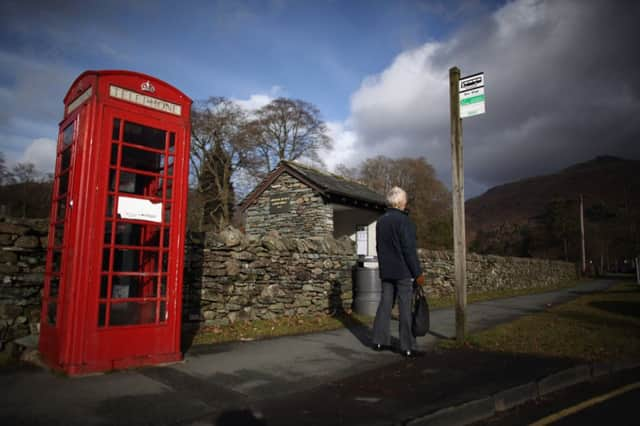Rural people need a 21st century strategy


Think of poverty in Scotland and you are likely to imagine hardship among residents of our cities rather than scenes of deprivation in our beautiful countryside. But in fact there is a very real problem of rural poverty in Scotland and many of those who experience it are actually falling between the cracks in national measures designed to help them.
Fuel poverty highlights the issue most starkly. Among householders in rural Scotland, 60 per cent of those over 60 are likely to be living in fuel poverty. This figure rises to more than 75 per cent in Orkney and the Western Isles. It is due to a variety of factors, including the dominance in the countryside of old housing, often in locations well off the gas grid.
Advertisement
Hide AdAdvertisement
Hide AdSo why is this happening? What we see is that national policies are not sufficiently tailored to the way poverty is experienced in rural areas, while rural policies don’t address the issue because they rely on national policies to do so. This disjointed situation is exacerbated by how we measure poverty in Scotland. The Scottish Index of Multiple Deprivation (SIMD) is used to measure poverty and inform policies. However, SIMD measures concentrations of poverty – whereas in rural areas, poverty and disadvantage exist in a very dispersed way – it is people, not places, that experience poverty.
While fuel poverty is an important characteristic of being poor in Scotland, it is not the only one. People in rural areas also find themselves struggling to raise their incomes with often only seasonal, short-term and generally low-paid jobs. This is often combined with high average house prices and a limited supply of affordable housing to buy or rent.
They may also face difficulties in accessing services, including health, social care, welfare benefits, training, education, leisure and a variety of shopping choices, which may further increase their risk of falling into hardship.
These challenges are experienced by different groups in different ways. For example, older people – an increasingly significant group within the population of rural Scotland – may experience particular difficulties in accessing health and social care services. Young people who cannot afford their own car and are reliant on costly and infrequent public transport services may experience difficulties accessing education, training and employment.
Young people are at particular risk of experiencing poverty and exclusion. There has long been a trend of youth out-migration from rural areas across Europe, particularly among those seeking better education and employment opportunities, affordable housing and leisure and recreation activities. The most common policy response tends to focus on “youth retention” – in other words, seeking to retain young people in their local rural communities.
However, this may not be appropriate for all young people, or indeed for all rural communities. While some may wish to stay close to home for many different reasons, many will be able to pursue their work and personal ambitions more effectively by moving away from their home area.
A more appropriate and sophisticated policy response would be focused on ensuring that young people have access to all of the relevant information and advice they need to make the best decision for them, whether that is to stay or to leave, and that they have choices about where to fulfil their lives.
The latter means that Scotland needs vibrant rural communities providing good quality jobs and education opportunities and a range of transport, housing and leisure options. As a result, young people – indeed people of any age – can stay locally and live fulfilling lives. Similarly, communities will attract new residents, including those approaching or at retirement age, many of whom wish to remain economically and socially active.
Advertisement
Hide AdAdvertisement
Hide AdRural Scotland is home to just over one million people and accounts for more than 90 per cent of Scotland’s overall land mass. The well-being of people, communities and businesses in our rural areas is critically important to sustainable economic growth, and so to Scotland’s success as a whole.
We therefore need a strategy and accompanying vision which will enable rural Scotland to move forward positively in the 21st century. This will help to make the most of the passion, experience and ideas of rural residents as well as effectively tackling the challenges they face, and maximising the potential of our high-quality, but increasingly pressurised, rural land.
Then it would be possible to assess potentially competing demands on land in an integrated way, to ensure that policy aspirations at national level and implementation at local level are more strongly connected, and to ensure that different policy issues are tackled coherently. It would also be possible to fully identify how the Scottish Government’s National Outcomes are being addressed in Scotland’s diverse rural areas.
We believe that the vision and strategy need to be underpinned by ten key principles: comprehensive, strategic, appropriate, significant, integrative, collaborative, people-centred, holistic, dynamic and innovative.
• Dr Sarah Skerratt is head of the land economy, environment and society (LEES) research group at Scotland’s Rural College (SRUC)
The 2014 edition of Rural Scotland in Focus, produced by the SRUC Rural Policy Centre, is at www.sruc.ac.uk/rsif
SEE ALSO